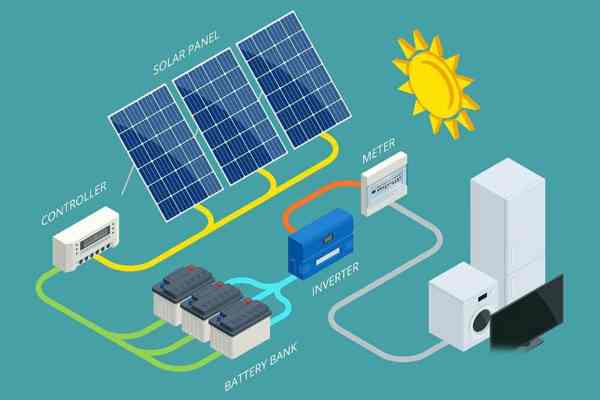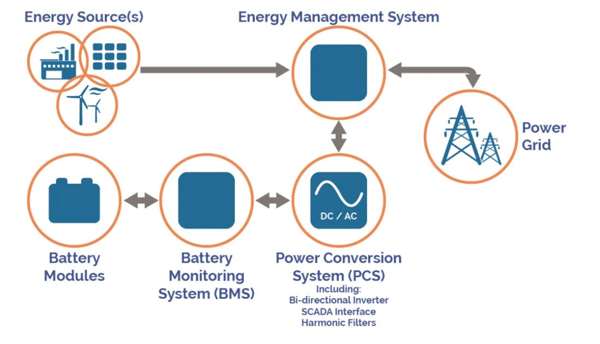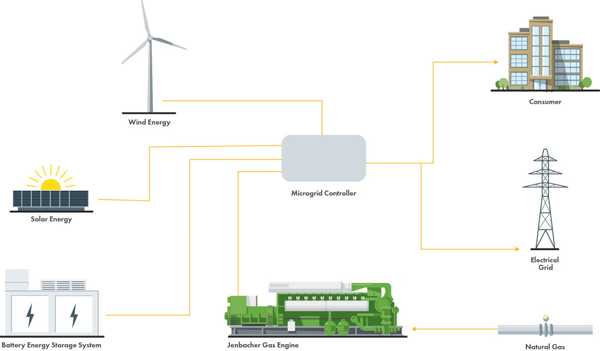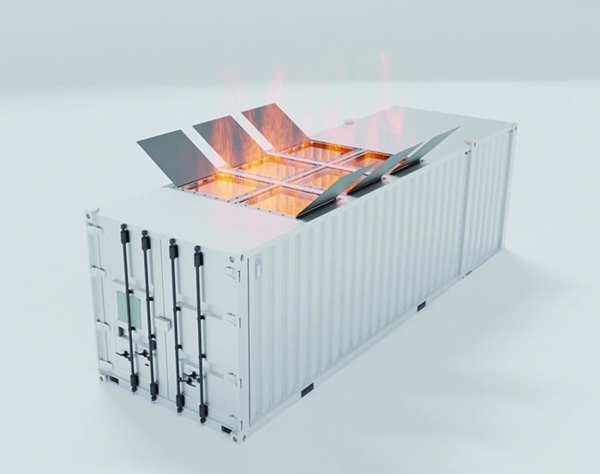Wat zijn de nadelen van Bess?
Batterijenergieopslagsystemen, of Bess, zijn een revolutie teweeggebracht hoe we energie gebruiken, vooral in combinatie met zonne -energie. Maar zoals bij elke grote technologische investering, Je vraagt waarschijnlijk: Wat zijn de potentiële nadelen? Het begrijpen van de nadelen is de sleutel tot een goed afgeronde, zelfverzekerde beslissing en het verzekeren van een BESS is de juiste pasvorm voor u.
De primaire nadelen van een BESS omvatten de belangrijke voorafgaande kosten, Een eindige operationele levensduur door batterijafbraak, Round-trip efficiëntieverliezen (je krijgt niet 100% van de opgeslagen energie terug), de fysieke ruimte die het vereist, en recycling-uitdagingen aan het einde van het leven. Echter, Moderne Bess -technologie, met name systemen die veilig en langdurig lithiumijzerfosfaat gebruiken (LFP) batterijen, heeft enorme vooruitgang geboekt bij het minimaliseren van deze zorgen, waardoor ze een waardevoller en betrouwbare investering zijn dan ooit tevoren.

Bij Gycx Solar, Wij geloven dat een geïnformeerde klant een gelukkige klant is. Het is belangrijk om niet alleen de krachtige voordelen van een BESS te begrijpen, maar ook zijn beperkingen. Laten we deze potentiële nadelen en de gerelateerde vragen die u heeft, onderzoeken.
Wat is het verschil tussen BMS en BESS?
Bij het verkennen van batterijopslag, U zult vaak de acroniemen "BMS tegenkomen" en "Bess." Het kan gemakkelijk zijn om ze te verwarren, Maar ze vertegenwoordigen twee heel verschillende, hoewel gerelateerd, Delen van een oplossing voor energieopslag. Inzicht in dit verschil is fundamenteel.
EEN BESS (Batterij-energieopslagsysteem) is de compleet, operationeel systeem dat winkels, bekeerden, en levert elektrische energie. Het is het hele pakket, inclusief batterijen, een omvormer, Controlesoftware, Veiligheidsmechanismen, en een behuizing. De GBS (Batterijbeheersysteem), aan de andere kant, is een kritiek interne component of subsysteem binnenin de Bess. De specifieke taak is om te fungeren als de elektronische "hersenen" Voor de batterijmodules zelf, ervoor zorgen dat ze veilig en efficiënt werken door hun cellen constant te bewaken en te beheren.

Duik dieper: Het systeem vs. De voogd van de batterij
Zie het met behulp van een analogie:
- De Bess is het hele high-performance team. Het omvat de sterspelers (de batterijmodules), De hoofdcoach die de toneelstukken roept (de pc's/omvormer en systeemcontroller), de trainingsfaciliteit (de behuizing en thermisch beheer), en al het veiligheidspersoneel. Het is de complete organisatie die is ontworpen om het energiespel te winnen.
- De BMS is alleen de gespecialiseerde teamarts en prestatiecoach voor de sterspelers. De BMS beslist niet wanneer hij aanval of verdediging moet spelen (De hoofdcoach/inverter doet dat), Maar het bewaakt constant de vitale tekenen van de spelers (celspanning, temperatuur, huidig), Zorgt ervoor dat ze zichzelf niet te veel uitoefenen (Bescherming tegen overbelasting/kwijting), houdt ze harmonieus samen te werken (celbalancering), en meldt hun gezondheidstoestand terug aan de hoofdcoach.
Een bess bevat:
- Batterijmodules
- De GBS
- Een stroomconversiesysteem (Pc's) of omvormer
- Een besturingssysteem en software
- Thermisch beheer (Koeling/verwarming)
- Veiligheidscomponenten (zekeringen, brekers, enz.)
- Een fysieke behuizing
De functies van de BMS zijn om:
- Bescherm de batterijcellen om buiten hun veilige limieten te werken.
- Breng de staat van lading in evenwicht in alle cellen om de levensduur en prestaties te maximaliseren.
- Schat en rapporteer de ladingstoestand van de batterij (SoC) en gezondheidstoestand (DusH).
- Communiceer vitale batterijgegevens naar de pc's/omvormer voor geoptimaliseerd opladen en ontladen.
GYCX Solar Story: "We leggen klanten vaak uit dat u geen betrouwbare moderne Bess kunt hebben zonder een geweldige BMS. Het is alsof je een krachtige motor hebt zonder computer om hem te beheren. De geavanceerde BMS in de systemen die we installeren, is wat de veiligheid en levensduur van de investering van de batterij garandeert."
Wat is een BESS -batterij -energie?
Je hoort over een Bess die 'energie opslaat," Maar wat betekent dat eigenlijk in praktische zin? Wat is de functie van deze opgeslagen energie, en hoe beheert het systeem het om je leven van stroom te voorzien wanneer je het nodig hebt?
"Bess Battery Energy" verwijst eenvoudig naar de elektrische energie die chemisch wordt opgeslagen in een opslagsysteem voor batterijenergie. Een Bess werkt door elektriciteit vast te leggen wanneer deze beschikbaar is (Bijvoorbeeld, van uw zonnepanelen overdag of 's nachts van het rooster), die energie opslaan in zijn batterijmodules, en vervolgens om te zetten in bruikbare AC -elektriciteit om uw huis of bedrijf op een later tijdstip van stroom te voorzien. Deze opgeslagen energie is wat back -up biedt tijdens een storing, bevoegd uw huis met zonne -energie na de zon ondergaat, of helpt u geld te besparen op uw elektriciteitsrekeningen.

Duik dieper: De stroom van energie in een bess
Een Bess is een time-shifting-machine voor energie. Laten we het pad van de energie volgen:
- Laadfase: De Bess neemt elektrische energie op. In een zonne -energiesysteem, Dit is DC Power direct uit uw zonnepanelen. Als u van het raster oplaadt, Het power conversiesysteem van de Bess (Pc's), of omvormer, converteert acvermogen van uw muur naar DC -stroom dat geschikt is voor de batterijen.
- Opslagfase: De DC -elektriciteit wordt opgeslagen via een chemische reactie in de batterijcellen (Meestal lithiumijzerfosfaat - LFP - in moderne Bess). LFP-technologie is uitstekend in het vasthouden van deze lading met een zeer lage zelfontlading, wat betekent dat het niet veel energie verliest, gewoon daar zitten.
- Fase ontladen: Wanneer u de opgeslagen energie moet gebruiken (Bijv., 's nachts, of tijdens een rasterstoring), De chemische reactie is omgekeerd, DC -elektriciteit vrijgeven van de batterij. De pc's (omvormer) zet deze DC -stroom vervolgens terug in de standaard ac -power die de apparaten van uw huis, lichten, en verkooppunten gebruiken.
De "energie" Een BESS biedt daarom een on-demand elektriciteit, u controle geven over wanneer en hoe u uw kracht gebruikt. De primaire toepassingen voor deze opgeslagen energie zijn:- Zelfconsumptie op zonne-energie: Overtollige zonne -energie opslaan om 's avonds te gebruiken, Het maximaliseren van uw gebruik van schone energie en het verminderen van rasterredelijkheid.
- Noodstroom: Het bieden van onmiddellijke kracht aan uw huis tijdens een rasterstoring.
- Piekscheer / Management voor gebruiksgebruik: Opladen wanneer rasterelektriciteit het goedkoopst is en ontlaadt wanneer het het duurst is om geld te besparen op uw nutsrekeningen.
Bij GYCX Solar, We ontwerpen BESS -oplossingen om deze energie naadloos te bieden, ervoor zorgen dat onze klanten de meeste waarde halen uit hun zonne -investering en de beveiliging van betrouwbare back -upkracht.
Wat is de levensduur van een Bess -batterij?
Een groot nadeel van een batterij is dat het niet eeuwig duurt. Als u in een Bess investeert, Een kritische vraag is hoeveel service u realistisch kunt verwachten van de batterijcomponent, omdat dit direct van invloed is op de langetermijnwaarde van het systeem.
De levensduur van een moderne Bess -batterij, die bijna altijd gebruikt Lithium-ijzerfosfaat (LFP) scheikunde, is typisch 10 naar 20 Jaren van kalenderleven. In termen van gebruik, Deze batterijen worden beoordeeld voor een zeer high cyclus leven, vaak variërend van 3,000 naar over 6,000 Cycli van volledige ladingontlading. Om dit te ondersteunen, Gerenommeerde fabrikanten bieden robuust 10-Jaargaranties die garandeert dat de batterij een specifiek percentage behoudt (Bijv., 70%) van de oorspronkelijke opslagcapaciteit na een decennium van dienst.

Duik dieper: Cyclus leven, Kalenderleven, en garanties
Laten we afbreken wat de levensduur van uw Bess -batterij bepaalt:
- Cyclus leven: Een "cyclus" is een volledige lading en ontslag. Als u dagelijks uw batterij fietst met een zonnestelsel, je zult accumuleren 365 cycli per jaar. Een batterij beoordeeld voor 6,000 Cycli heeft het potentieel om ver te gaan 15 jaren onder dergelijk gebruik (6000 cycli / 365 Cycli/jaar ≈ 16.4 jaren). De duurzaamheid van LFP Chemistry is een belangrijke reden waarom het de voorkeur heeft voor stationaire opslag boven andere lithium-iontypen met een kortere cycluslevens (Zoals NMC, vaak 1,000-3,000 cycli).
- Kalenderleven: Alle batterijen degraderen ook langzaam af in de loop van de tijd als gevolg van interne chemische veroudering, Ongeacht het gebruik. De stabiele chemie van LFP geeft het een lange levensduur, vaak 15-20 Jaren vóór significante degradatie. Dit is een enorme verbetering ten opzichte van traditionele batterijen voor loodzuur, die meestal alleen duren 3-7 jaren.
- Garantie: De garantie is uw zekerheid van prestaties. Een standaardgarantie voor een kwaliteitsresidentiële Bess kan "10 jaar of 4,000 cycli, tenminste behouden 70% Capaciteit." Dit geeft u een duidelijke basislijn van verwachte prestaties.
- Factoren die de levensduur maximaliseren:
- Scheikunde: LFP kiezen is de eerste stap.
- Kwaliteit BMS: Een geavanceerd batterijbeheersysteem is cruciaal voor het beschermen van de batterij tegen stress en het balanceren van de cellen, Direct bijdragen aan een langer leven.
- Thermisch beheer: De Bess moet de batterijen binnen hun optimale temperatuurbereik houden. Extreme warmte is een primaire oorzaak van versnelde afbraak.
- Diepte van ontlading (DoD): Terwijl LFP diepe lozingen goed afhandelt, Systeemontwerpen die de batterij niet consequent tot zijn absolute minimum aftappen, kunnen de levensduur enigszins verlengen.
GYCX Solar Story: "Wanneer we de systeemwaarde bespreken met klanten, We benadrukken het langetermijnkarakter van LFP Bess. Investeren in een systeem met een garantie van 10 jaar en een levensduur van 6.000 cyclus betekent dat u in meer dan tien jaar energiezekerheid en besparingen investeert, De voorafgaande kosten veel begrijpelijker maken."
Wat zijn de gevaren van opslagsystemen voor batterijenergie?
Wanneer u een grote hoeveelheid energie op één plek concentreert, Zoals in een opslagsysteem voor batterijenergie, Het is natuurlijk en belangrijk om te vragen naar de potentiële gevaren. Veiligheid is de meest kritische overweging bij elk BESS -ontwerp en installatie.
De primaire potentiële gevaren van BESS vormen het risico van thermische vluchteling (vuur) Als een batterijcel defect is, beschadigd, of ernstig misbruikt, elektrische gevaren van de hoogspannings DC-componenten in het systeem, en het risico van chemische blootstelling Als een batterijbehuizing wordt geschonden. Echter, Het is cruciaal om te begrijpen, vooral degenen die gebruiken LFP -chemie en beheerd door een geavanceerde BMS, worden ontworpen met meerdere veiligheidslagen om deze risico's extreem laag te maken Wanneer professioneel geïnstalleerd en gecertificeerd.

Duik dieper: BESS -risico's begrijpen en verzachten
Hier is hoe een professioneel ontworpen en geïnstalleerde BESS deze potentiële gevaren aanpakt:
- Thermische wegloper (Vuur): Dit is het meest gesproken risico, waarbij een celfalen een kettingreactie creëert van oververhitting.
- Verzachting #1: Veiliger chemie. Dit is de eerste verdedigingslinie. Wij bij GYCX Solar prioriteren LFP (Lithium-ijzerfosfaat) chemie omdat het inherent veel chemisch stabieler is en een aanzienlijk hogere thermische weggelopen drempel heeft (Het kan hogere temperaturen weerstaan voordat het faalt) dan andere lithium-ion chemie zoals NMC en LCO, het veel veiliger maken voor huis- en bedrijfsinstallaties.
- Verzachting #2: De BMS. Het batterijbeheersysteem is een waakzame waakhond. Het bewaakt constant de temperatuur en spanning en zal de batterij loskoppelen als het eventuele afwijkingen detecteert lang voordat ze kunnen escaleren in een gevaarlijke thermische gebeurtenis.
- Verzachting #3: Thermisch beheer. De Bess -behuizing is ontworpen om warmte af te voeren, vaak met ventilatie- of actieve koelsystemen, Om de batterijen in hun veilige bedrijfstemperatuurbereik te houden.
- Verzachting #4: Veiligheidstests. Gerenommeerde BESS -producten ondergaan rigoureuze veiligheidstests volgens normen zoals UL 9540A, die specifiek hun weerstand evalueert tegen thermische weggelopen propagatie. We raden ten zeerste aan om systemen te kiezen die deze tests hebben doorstaan.
- Elektrische gevaren:
- Risico: Bess bevat hoogspannings DC-elektriciteit, die gevaarlijker kunnen zijn dan standaard AC als het onjuist wordt behandeld.
- Verzachting: Alle interne hoogspanningscomponenten zijn ingesloten en beschermd. Installatie moet worden uitgevoerd door een gekwalificeerde, gelicentieerde elektricien die alle nationale elektrische code volgt (NEC) normen, inclusief de juiste bedrading, aarding, en installatie van veiligheidsverbindingen. Dit is geen doe -het -zelf -project.
- Chemische gevaren:
- Risico: Lekkage van elektrolyt als een batterijcel fysiek doorboord of beschadigd is.
- Verzachting: Bess is gehuisvest in robuust, beschermende behuizingen. Juiste installatielocatie en hanteringsprocedures voorkomen fysieke schade.
Bij GYCX Solar, Veiligheid is onze absolute prioriteit. We bereiken dit door batterijsystemen te gebruiken met de veiligste chemie (LFP1. ), ervoor zorgen dat ze zijn gecertificeerd volgens de hoogste veiligheidsnormen (UL 9540/9540A), En het laten installeren van onze professionele teams volgens alle toepasselijke codes en best practices.
Hoewel het belangrijk is om zich bewust te zijn van de nadelen en potentiële gevaren van opslagsystemen voor batterijenergie, De realiteit is dat moderne technologie hen ongelooflijk veilig heeft gemaakt, betrouwbaar, en waardevolle activa. De hoge kosten vooraf worden in toenemende mate gecompenseerd door een lange levensduur, Aanzienlijke energiebesparing, en onschatbare gemoedsrust.
Als u vragen heeft over BESS -technologie of wilt onderzoeken hoe een veilig en betrouwbaar energieopslagsysteem uw huis of bedrijf ten goede kan komen, Het GYCX -zonneteam is hier om te helpen. Wij bieden deskundige richtlijnen en oplossingen van hoge kwaliteit. Neem vandaag nog contact met ons op voor een consult!
Begrijp het concept van lithiumijzerfosfaat (LFP) Om de gegevensconcepten die verband houden met lithiumbatterijen beter te vergelijken en te begrijpen. Dit helpt u bij het selecteren van een product dat beter past bij uw behoeften. ↩
